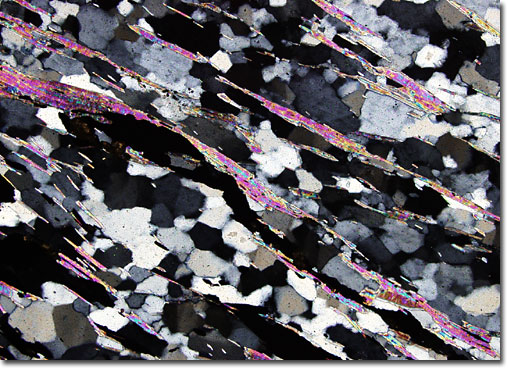|
Sericite typically occurs as aggregates of tiny flakes and exhibits a silky sheen, which it imparts to the rocks that it is found in. The muscovite-based type of sericite most often occurs in phyllites, schists, and other rocks that exhibit a fine-grained, layered structure. The paragonite sericite is found in similar locations, but was formerly believed to be much less common than the muscovite form. Many geologists now suppose that many instances of paragonite were mistakenly identified as muscovite because both are light colored micas and a determination between the two cannot usually be made without establishing their potassium to sodium ratios. Nevertheless, humans have utilized both types of sericite for many years in a variety of products that range from porcelain and ceramics to cosmetics, paints, and plastics.
|
